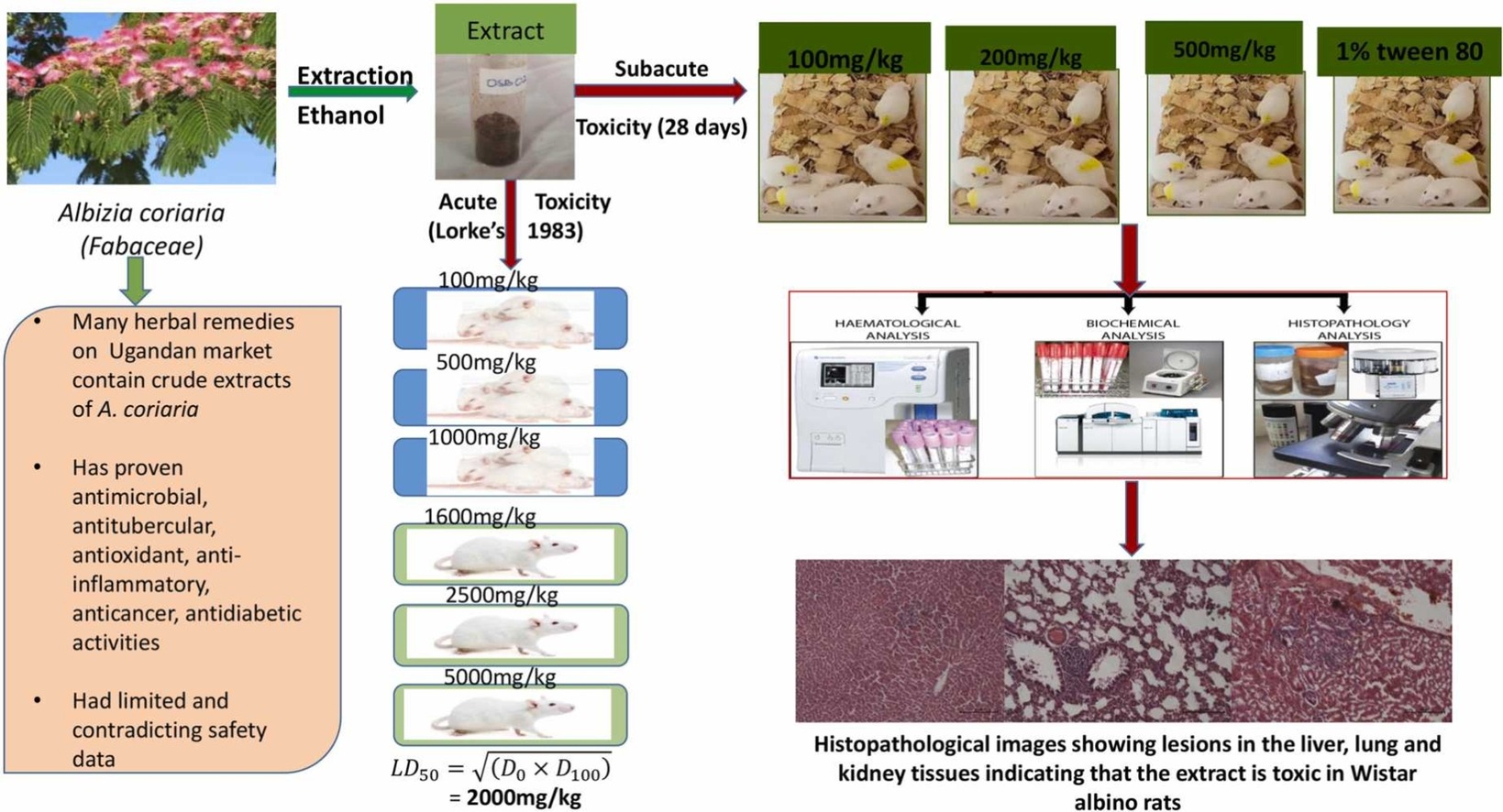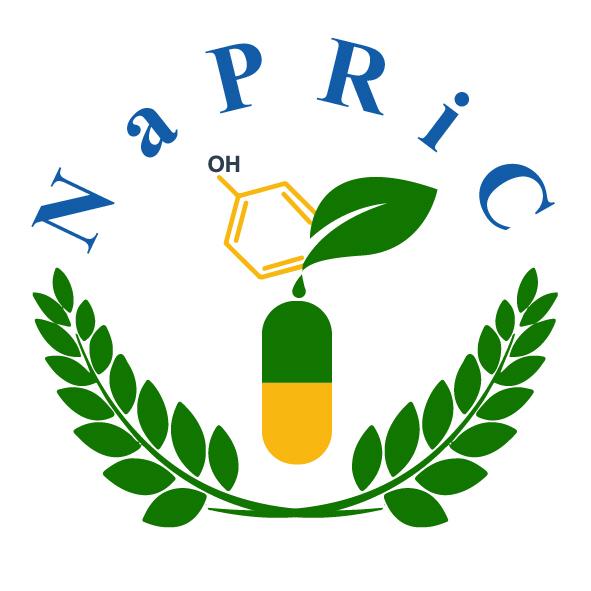Acute and subacute toxicity profile of ethanolic stem bark extract of Albizia coriaria Welw. ex Oliv. in Wistar albino rats
Albizia coriaria (Fabaceae) crude extracts are key ingredients of several licensed and unlicensed herbal products in East Africa. However, there is limited and often contradicting information regarding its toxicity. We therefore evaluated the acute and subacute toxicity of the ethanolic stem bark extract of A. coriaria in mature healthy Wistar albino rats following Lorke’s method and OECD guidelines 407. The LD50 of the ethanolic stem bark extract of A. coriaria was 2000 mg/kg. The acute toxicity signs observed included piloerection, hyperventilation, lethargy, and loss of righting reflex. There was a significant increase in aspartate aminotransferase, alkaline phosphatase, red blood cells and haemoglobin in rats after 28 days at the dose of 500 mg/kg. Histological analyses revealed multifocal random parenchymal necrosis and scattered periportal mononuclear inflammatory cells infiltration in the liver, interstitial nephritis in the kidney and multifocal lymphoid accumulation in the peribronchiolar and perivascular lung tissue at 500 mg/kg. The ethanolic stem bark of A. coriaria was therefore moderately toxic to the rats when administered in a single high oral dose within 24 h. The extract caused a dose dependent toxicity with significant damage to the kidney, liver and lung tissues at a dose of 500 mg/kg after 28 days. Herbal medicines containing A. coriaria extracts should be consumed cautiously due to likelihood of toxicity particularly at higher doses greater than 500 mg/kg.


